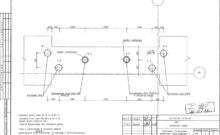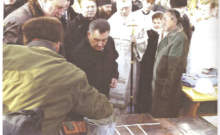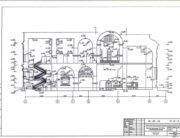Having conducted historical archival and bibliographic studies of the Assumption Cathedral, according to the description of 1593, there were thirty-four icons in precious silver gilded rivets decorated with pendants made of gold coins, ancient hryvnias, various precious stones and crowns …
In the 16th century, in the northeastern and southern parts of the temple, three small chapel churches were added to be called the churches of Stephen, John the Theologian and the Three Hierarchs.
“From above, all these churches (Pirogoshch, the Great Pechersk Church, St. Michael’s Monasteries in Vydubetsky and others) more than once, not two, were rebuilt, especially in the seventeenth and eighteenth centuries, when Cossack masters and founders again decorated Kiev.”
After the great fire of April 1718, “in 1723-1729, the temple was rebuilt and mostly re-decorated.” Built earlier around the chapel were joined together by walls. The inner walls were painted by a group of artists led by the Kiev painter Pavel Popovich.
The main iconostasis was done by the Chernihiv snitsar Grigory Petrov and partly by the master Kakim Glinsky.
The iconostases of other altars in the Assumption Cathedral were made by snitsar of the Lavra workshop – master Hilarion and Ivan Snitsar from Vasilkov …
All the carvings of the iconostasis, departments, kiots sparkled “gold” and reinforced the impression of painting on the walls, arches, arches and sails.
“The Great Lavra Church was consecrated on August 14, 1729 by the Kiev Archbishop Varlaam Vanatovich the re-establishment of the Assumption Cathedral after the fire of 1718, according to the count, made on December 1, 1727 cost the Lavra 133.166 gold.”
As A.V. Sitkar’ova writes, “the centuries-old history of one of the most ancient architectural monuments of Kievan Rus, the Assumption Cathedral of the Kiev-Pechersk Lavra, is reflected in numerous engravings, in written and archival sources. But the scientific study of the cathedral began only in the XIX century.
The accumulation of information about the cathedral, which formed the basis for its scientific research, was very slow. ” The first thorough “historical and archaeological description of the Assumption Cathedral was made by Metropolitan of Kiev and Galicia sacredly by Archimandrite of the Kiev-Pechersk Monastery Samuel Mislavsky. “Purposeful attempts to study architectural monuments were carried out in 1809-1810. Historical ar archeological expedition headed by historian and archaeologist K.M. Borozdin “. “Works of the authors of the XVIII century. – first half of the XIX century. … there were mainly more or less detailed reports on the historical fate of the monument, with some exceptions, references to primary sources. ”
Bolkhovitinov wrote: “Inside the church of this 9 side thrones 5 below and 4 above. On the right side of the south entrance: 1) a throne in the name of St. Michael the Archangel (later Transformation into a diy) and 2) St. John the Divine; 3) Three Saints … On the left side of the north entrance; 4) the throne in the name of the Holy Apostle and Archdeacon Stephen, arranged by the princes Boretsky. From it – move under the floor in the tomb …; 5) St. John the Baptist. Above the choirs on the right side; 6) in the name of sv. Ap. Andrew the First Called; 7) Rev. Anto-Pechersky. From the left side; 8) The Transfiguration of the Lord; 9) Rev. Theodosius of Pechersk ”.
In 1839, the Trehsvyatitelsky Altar was liquidated, and the room was completely transformed into a sacristy. ”
“The Great Pechersk Church, the Western, Northern and Southern walls outside are decorated with stucco work, and over the eaves, oval jurmy shields with images sacred on them are displayed.”



















